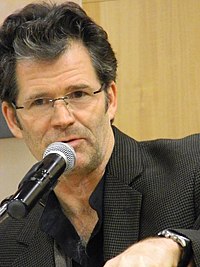| Don Cusic |
As examples, he mentioned Patsy Cline, whose records appeared in the late 1950s and early '60s. Cusic said she appealed to the same people who, in their youth, loved big-band singers like Doris Day, Jo Stafford and Helen Forrest. About a decade and a half after the Beatles and similar groups, the same fans who loved them were listening to Alabama and the Oak Ridge Boys on country stations.
I'm beginning to understand why my son, now in his early 40s, listens to country radio. I don't hear it, but apparently today's country performers remind him of Heart, U-2 and other rock groups he once listened to.
As for me, I loved the folk music of the 1960s, especially Peter, Paul and Mary, and, as far as I'm concerned, country music reached its zenith when Willie Nelson and Merle Haggard recorded Pancho and Lefty in 1983. Kris Kristofferson, Emmylou Harris and similar performers also had country hits during that period.
I still enjoy the same kind music, and will always stop whatever I'm doing whenever Peter, Paul and Mary or Pancho and Lefty come on Pandora or Spotify. But I no longer know what to call this music, and neither does anyone else apparently. Today neither the term folk nor country quite covers it.
Sometimes it's called acoustic, but the music I like isn't always acoustic. You also hear the term Americana. But this morning I was listening to Mary Black sing the kind of songs I enjoy, and she's Irish. Others prefer to called it singer/songwriter music, but don't many pop, rock and country singers write their own songs?
So it's music without a name, but I know it when I hear it, and I'm hearing it right now on Lucinda Williams Radio.

